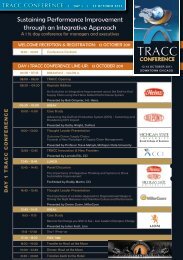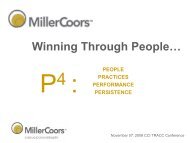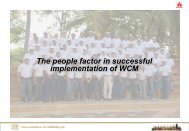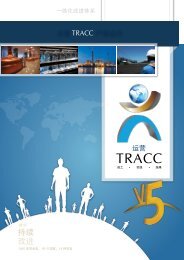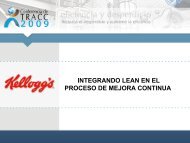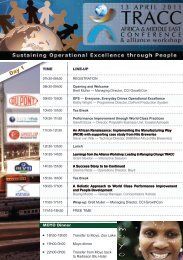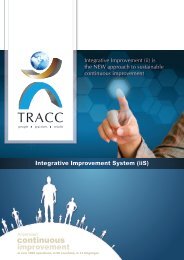e - TRACC
e - TRACC
e - TRACC
- No tags were found...
Create successful ePaper yourself
Turn your PDF publications into a flip-book with our unique Google optimized e-Paper software.
MAKING IT STICK - StrategyMy perspective on the abovesituation is: We set up manufacturing,processing or service operationsto provide a product or serviceeffectively and efficiently. Whetherthese operations are engineered orevolved from individual processesand practices, there are always manyproblems that prevent operationsfrom performing as intended.Old management thinking givesmanagers and specialists the roleof figuring out how to resolve anoperation’s problems. But thereare never enough managers andspecialists to be everywhere all the time to deal with problems. New thinking recognisesthat no one is better positioned to address an operation’s problems than the people whodo the work.Therefore, the role of managers and specialists is to help ensure that those doing the worksee the right problems at their level, recognising the importance of addressing them;and respect the thinking abilities of people doing the work, while coaching to develop theirproblem-solving skills.As we enter a new decade, greater interest in leveraging the power of employeeproblem-solving in a continuous improvement culture has emerged in manycompanies. This creates a dilemma for most managers who are now expected tolead engaged employees. There are few, if any, road maps for success through thisnew territory.The traditional command-and-control method of delegating tasks and focusingon accountability for results doesn’t create or sustain the type of environment needed.Employees don’t react well to being given responsibility and then feeling it’s been takenaway when managers take over the problem-solving.Is there an approach that strikes a balance between the responsibility for deliverables,focus of traditional management, and the opportunity to engage and think of theempowerment style? If there is, we don’t yet have a name for it.To be self-initiating problem-solvers, employees need a leadership and managementapproach that emphasises role, responsibilities, requirements and purpose, and thendemonstrates respect for their ability to think and learn. This is achieved by making sure thesurrounding conditions allow them to succeed, supporting their efforts through coachingand teaching when needed.The challenge of moving from a traditional results-oriented manager to a managerwho sees his or her role as leading, engaging, enabling and coaching the thinkingand performance of others, shouldn’t be underestimated. It’s a difficult transition formanagers whose own success has been based on their problem-solving and individualdrive. In short, you have to learn to leave your ego in the office.WGLL Journal Volume 2 © CCI info@etracc.net www.etracc.net



